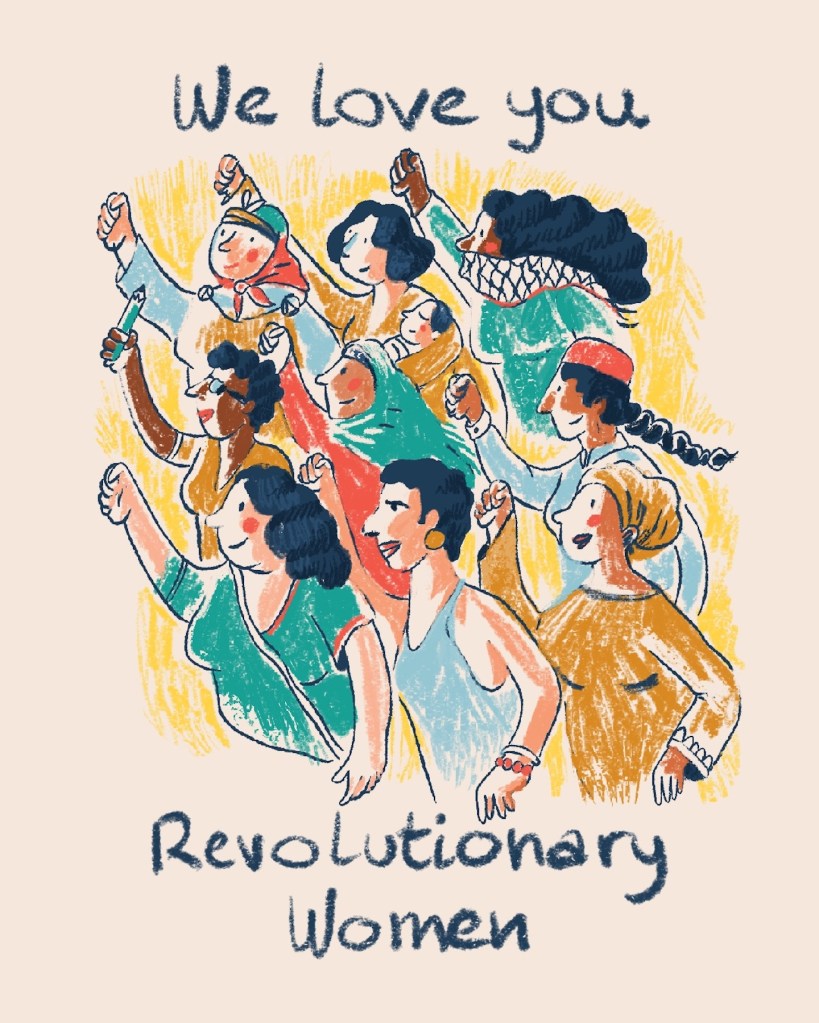A new exhibition at the Brooklyn Museum is challenging the traditional feminist narrative by giving voice to women of color that were largely left out of the mainstream dialogue. “We’re talking about a feminism that was emerging in the 60s and 70s alongside of, along with, and sometimes in opposition to the better known history of mainstream feminism or predominantly white feminism,” Catherine Morris, curator of the exhibition and senior curator at the Elizabeth A. Sackler Center for Feminist Art, tells Creators.
We Wanted a Revolution: Black Radical Women , 1965-85 is a group show that focuses on women of color as artists and activists during a period of social upheaval that afforded drastic changes in the art world. A time that saw many artists shift from an activist approach to social issues in the 60s and 70s to a more theoretical approach in the 80s.
Videos by VICE

Jan van Raay. Faith Ringgold (right) and Michele Wallace (middle) at Art Workers Coalition Protest, Whitney Museum, 1971. Courtesy of Jan van Raay, Portland, OR, 305-37
In that 20-year period, the Feminist movement was gaining momentum, as was the Black Power movement, but it is the lesser known histories in between that serve as the focal point of this exhibition. We Wanted a Revolution coheres around significant historical events rather than a standard artist-centric group show design, meaning that the same artist is often represented in different areas throughout the show, dependent on which movements and moments they participated in. Each touchstone event is then contextualized in what Morris describes as “a very media-rich experience that strives to tell a socio-historical story while also trying to focus very heavily on the careers of these visual artists who were very engaged in the art world and very interested in the social politics of the time, but also saw themselves as dedicated to a career as artists.”

Where We At Collective. Cookin’ and Smokin’, 1972. Photo courtesy of Dingda McCannon Archives, Philadelphia, PA.
One example is the artist, Faith Ringgold. “She appears in multiple political and social threads of this story,” Morris explains. In one instance, she was awarded a grant to make public art and rather than employ a more traditional public art medium, such as sculpture or street art, she initiated a dialogue with incarcerated women at Riker’s Island, prior to its transition into an all-male institution. Using their narratives, she created a large-scale painting in the prison entitled, For the Women’s House, that reflected their stories and their voices. When the prison switched to a male-only population, her mural was painted over. However, when a prison guard alerted Ringgold, she requested a reversal, which was granted. This artwork has been removed from the prison and will be shown in We Wanted a Revolution. Ringgold’s work surfaces in other areas of the show, including Where We At, a collective of black women artists central to the Black Arts Movement of the 60s and 70s. In this way, the exhibition explores the complex history of feminism outside of the predominant narrative. According to Morris, “We are in a position now to complicate that story and to introduce multiple voices that make it richer and more interesting.”

Faith Ringgold. For the Women’s House, 1971. Courtesy of Rose M. Singer Center, Rikers Island Correctional Center
The exhibition incorporates a variety of disciplines, from the artworks themselves to photographs, ephemera, audio, interviews, and a selection of publications from the period republished in the form of a sourcebook. “These are histories that were out in the world at the time, but they weren’t always told in a place like the Brooklyn Museum,” Morris says.
Central to these lesser known histories within the feminist movement at large is the Combahee River Collective, a group of black lesbian women who came together, according to Morris, “to address what they saw as the intersecting experiences of their lives, including race, sex, and class.” Their mission statement forms the conceptual foundation for We Wanted a Revolution and is reprinted in the exhibit’s sourcebook. Its last line reads: “As Black feminists and Lesbians we know that we have a very definite revolutionary task to perform and we are ready for the lifetime of work and struggle before us.”

Amma Amos. Preparing for a Face Lift, 1981. Courtesy of Emma Amos; courtesy of the artist and RYAN LEE, New York. Licensed by VAGA, New York

Howardena Pindell. Still from Free, White and 21, 1980. Courtesy of the artist and Garth Greenan Gallery, New York
We Wanted a Revolution will be on view at the Brooklyn Museum from April 21st to September 17th, 2017. The Brooklyn Museum will offer a series of public programming to accompany the exhibition. For more information, click here.
Related:
“Knotty” Macramé Works Bind Feminism, Queerness, And Diversity
South African Artist Explores Feminism Through Intimate Sculptures




